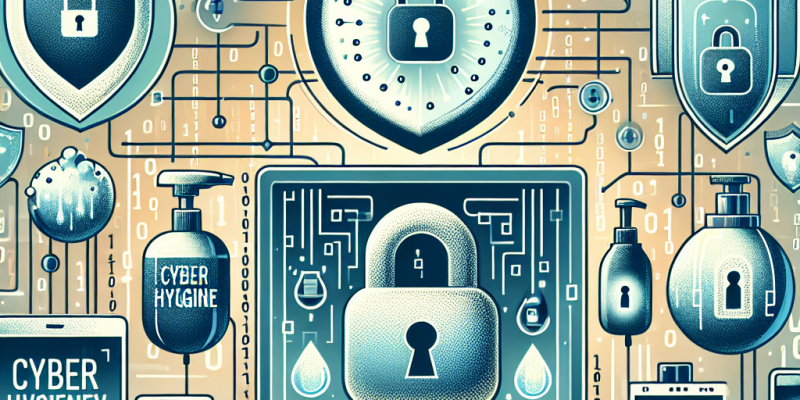Cyber Hygiene: Simple Steps for Everyday Safety

In today’s digital landscape, practicing good cyber hygiene is more important than ever. With the rise of cyber-attacks and data breaches, individuals and organizations must adopt habits that promote online safety. Here are some simple yet effective steps you can incorporate into your routine to enhance your cyber hygiene.
1. Use Strong, Unique Passwords
One of the simplest and most effective ways to protect your online accounts is to use strong, unique passwords for each service. A good password should be:
- At least 12 characters long
- A mix of uppercase and lowercase letters
- Incorporated with numbers and symbols
- Not based on easily accessible personal information (like birthdays or names)
Using a password manager can help you generate and store these complex passwords securely.
2. Enable Two-Factor Authentication (2FA)
Two-factor authentication adds an additional layer of security by requiring two forms of identification before accessing an account. This typically involves something you know (your password) and something you have (a code sent to your phone). Always enable 2FA on accounts that offer it, especially for email and banking.
3. Keep Software Updated
Keeping your operating system, applications, and antivirus software up to date is crucial for protecting against vulnerabilities. Software developers frequently release updates to patch security holes that cybercriminals exploit. Setting your devices to update automatically can help ensure you’re always protected by the latest security patches.
4. Be Wary of Phishing Scams
Phishing scams have become increasingly sophisticated, often appearing as legitimate emails or notifications. Always verify the sender’s email address and be cautious when clicking on links or downloading attachments. Look for signs of phishing, such as poor grammar or requests for personal information.
5. Secure Your Wi-Fi Network
Your home Wi-Fi network can be an entry point for cybercriminals if not secured properly. Here are a few tips:
- Change the default SSID (network name) and password of your router.
- Use WPA3 encryption if available or WPA2 as a minimum.
- Regularly check the devices connected to your network and remove any unfamiliar ones.
6. Regularly Back Up Your Data
Data loss can occur for various reasons, from hardware failure to cyber-attacks. Regularly backing up your data ensures you won’t lose important information. Consider using both cloud storage and physical external hard drives for redundancy.
7. Educate Yourself and Your Family
Awareness of cybersecurity threats is the first line of defense. Take time to educate yourself and your family about potential risks and safe online behavior. This includes recognizing suspicious messages, understanding privacy settings, and the importance of not sharing personal information online.
8. Limit Personal Information Sharing
Be mindful of the information you share on social media and other platforms. Adjust your privacy settings to control who can see your content and limit the amount of personal information available to the public. Cybercriminals often use social engineering techniques to gather information, making this step crucial.
Conclusion
Practicing good cyber hygiene is essential in today’s interconnected world. By implementing these simple steps, you can significantly reduce your risk of falling victim to cyber threats. Maintain regular reviews of your security practices, stay informed about the latest threats, and remember that a proactive approach to cyber hygiene is your best defense against cybercrime. Keep your digital life secure and enjoy peace of mind in your online activities!














